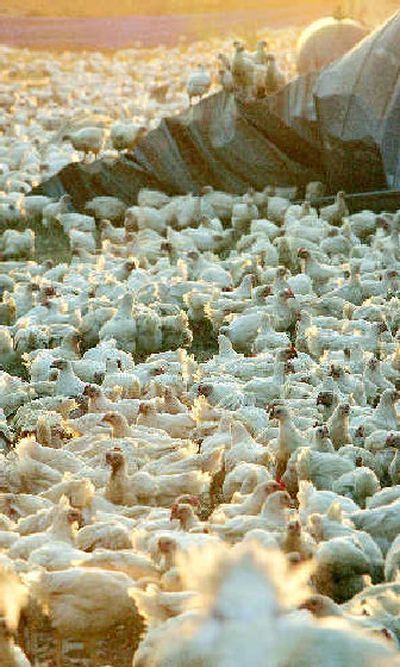Disaster on the farm

JACKSON, Miss. — Cotton fields are flattened. Hundreds of chicken houses are destroyed. Timber and pecan trees are splayed across the ground.
Two weeks after Hurricane Katrina hit, the damage to agriculture in the Gulf states has topped $3 billion, officials say.
“In some areas, it was total disaster,” said Patrick Sullivan, market development director for the Mississippi Department of Agriculture and Commerce.
More than half of the losses are in the timber industry, where many of the trees that can be salvaged now have less value. But the damage is widespread, reaching Christmas tree growers and businesses raising poultry.
More than $2 billion in damage is reported in Mississippi and $1 billion in Louisiana. Alabama, which was less severely affected, has not yet compiled figures.
“The numbers are getting bigger every day,” Louisiana State University AgCenter economist Kirk Guidry said.
The damage will weigh heavily on producers. But the impact of the poultry losses on consumers is expected to be small, and it is too early to say the timber losses will affect prices for building products, experts say.
The damage is evident around Wiggins, Miss., about 35 miles from the coast, known for turning out poles for the utility industry. Now, much of the damaged timber will likely only be good for less lucrative pulp.
“They look just like somebody’s messed-up hair,” timber appraiser John Guthrie said of the downed trees in the area.
The U.S. Department of Agriculture has designated all of Mississippi’s 82 counties disaster areas, making them eligible for federal assistance programs. The state is the nation’s fourth-largest poultry producer; agriculture officials said 300 of 6,000 chicken houses were destroyed and more than 2,000 damaged. The hardest-hit cotton crops account for only about 1,500 of the 1.2 million acres in the state, officials said.
Louisiana’s damage estimate is expected to keep growing because early estimates did not include damage to fences, equipment, buildings, pasture land and other infrastructure losses, Guidry said.
Guidry said 10,000 to 11,000 head of cattle in Louisiana were dead or missing.
“The ones that are alive, the problem is getting them feed and water,” he said.
The Mississippi Cattlemen’s Association put out a plea for donations and help to repair a huge number of flattened or damaged fences.
Many dairies throughout the three-state region were forced to dump milk when power was lost in refrigeration units.
Pecan growers in Mobile and Baldwin counties in southwestern Alabama, where 50 percent to 60 percent of the state’s pecan crop is produced, suffered heavy losses, said Monte Nesbitt, a pecan expert at Auburn University.